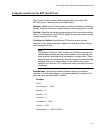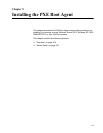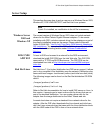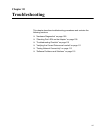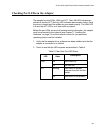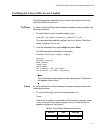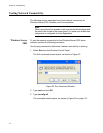
AT-29xx Series Gigabit Ethernet Network Adapters Installation Guide
105
Server Setup
This section discusses how to set up a server on a Windows Server 2003,
Windows XP, DOS UNDI/APITEST, and Red Hat Linux systems.
Note
If pack 3 is installed, no modification to the inf file is necessary.
Windows Server
2003 and
Windows XP
The current version of Windows Server 2003 does not include network
drivers for the Allied Telesis Gigabit Ethernet adapters. To do remote
installation with PXE, include a network driver for the adapter as a part of
the client's installation image on the server. Please refer to Microsoft
Article ID Q246184 - "How to Add Third-Party OEM Network Adapters to
RIS Installations." An example of this RIS installation to modify your inf file,
refer to the troubleshooting section under Software Problems and
Solutions.
DOS UNDI/
APITEST
To boot in DOS and connect to a network for the DOS environment,
download the Intel® PXE PDK from the Intel Web site. This PXE PDK
comes with a TFTP/ProxyDHCP/Boot server. The PXE PDK can be
downloaded from Intel at http://developer.intel.com/ial/WfM/tools/pxe/
index.htm.
Red Hat Linux Red Hat Linux 7.3 (or higher) distribution has PXE server support. It allows
you to do a complete Linux installation over the network. Distribution also
comes with boot images - boot kernel (vmlinuz) and initial ram disk (initrd).
The following images can be found on the Red Hat distribution CD-ROM
disk#1:
/images/pxeboot/vmlinuz
/images/pxeboot/initrd.img
Refer to Red Hat documentation for how to install PXE server on Linux. In
this version, it prompts you to insert a driver disk for drivers that are not
part of the standard distribution. You can create a driver disk for the
adapter from the image distributed on the Allied Telesis web site.
A remote boot does not require a standard Linux network driver for the
adapter. After the PXE client downloads the Linux kernel and initial ram
disk, the Linux universal driver that came with the Linux distribution binds
with the UNDI code of the PXE to form a Linux network driver.







